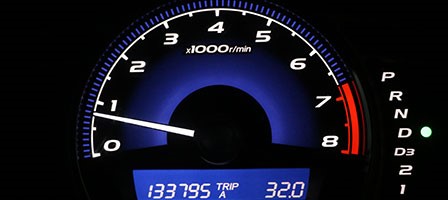Tax Pro Plus
2999 Overland Ave.
Suite 204
Los Angeles, CA 90064
Map It!
Ph: (310) 827-4829
Fax: (310) 842-7160
info@taxproplus-la.com
Standard Mileage Rates for 2017 Announced
 Article Highlights:
Article Highlights: - 2017 Standard Mileage Rates
- Business, Charitable, Medical and Moving Rates
- Important Considerations for 2017
- Switching Between the Actual Expense and the Standard Mileage Rate Methods
- Employer Reimbursements
- Special Allowances for SUVs
Beginning on Jan. 1, 2017, the standard mileage rates for the use of a car (or a van, pickup or panel truck) are:
- 53.5 cents per mile for business miles driven (including a 25-cent-per-mile allocation for depreciation). This is down from 54.0 cents in 2016;
- 17 cents per mile driven for medical or moving purposes. This is down from 19 cents in 2016; and
- 14 cents per mile driven in service of charitable organizations.
Important Consideration: The 2017 rates are based on 2016 fuel costs, which were at a historic low. On top of that, OPEC has decided to cut production in an effort to drive up fuel costs. The Automobile Club has predicted an increase in fuel prices in the near future. Based on the potential for substantially higher gas prices in 2017, it may be appropriate to consider switching to the actual expense method for 2017, or at least keeping track of the actual expenses, including fuel costs, repairs, maintenance, etc., so that option is available for 2017.
Taxpayers always have the option of calculating the actual costs of using their vehicle for business rather than using the standard mileage rates. In addition to the potential for higher fuel prices, the extension of the bonus depreciation though 2019 may make using the actual expense method a worthwhile consideration in the first year the vehicle is placed in service. The bonus depreciation allowance adds an additional $8,000 to the maximum first-year depreciation deduction of passenger vehicles and light trucks that have an unloaded gross vehicle weight of 6,000 pounds or less.
However, the standard mileage rates cannot be used if the actual method (using Sec. 179, bonus depreciation and/or MACRS depreciation) has been used in previous years. This rule is applied on a vehicle-by-vehicle basis. In addition, the business standard mileage rate cannot be used for any vehicle used for hire or for more than four vehicles simultaneously.
Employer reimbursement – Where employers reimburse employees for business-related car expenses using the standard mileage allowance method for each substantiated employment-connected business mile, the reimbursement is tax-free if the employee substantiates to the employer the time, place, mileage and purpose of employment-connected business travel.
Employees whose actual employment-related business mileage expenses exceed the employer’s reimbursement can deduct the difference on their income tax return as a miscellaneous itemized deduction subject to the 2%-of-AGI floor. However, an employee who leases an auto and is reimbursed using the mileage allowance method can’t claim a deduction based on actual expenses unless he does so consistently beginning with the first business use of the auto.
Faster Write-Offs for Heavy Sport Utility Vehicles (SUVs) - Many of today’s SUVs weigh more than 6,000 pounds and are therefore not subject to the luxury auto depreciation limit rules; taxpayers with these vehicles can utilize both the Section 179 expense deduction (up to a maximum of $25,000) and the bonus depreciation (the Section 179 deduction must be applied first and then the bonus depreciation) to produce a sizable first-year tax deduction. However, the vehicle cannot exceed a gross unloaded vehicle weight of 14,000 pounds. Caution: Business autos are 5-year class life property. If the taxpayer subsequently disposes of the vehicle early, before the end of the 5-year period, as many do, a portion of the Section 179 expense deduction will be recaptured and must be added back to income (SE income for self-employed individuals). The future ramifications of deducting all or a significant portion of the vehicle’s cost using Section 179 should be considered.
If you have questions related to the best methods of deducting the business use of your vehicle or the documentation required, please give this office a call.
|
|  |